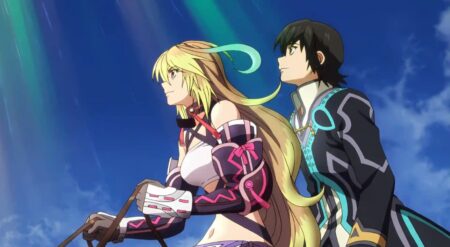Final Fantasy VII has long been considered not just one of the greatest Final Fantasy games but one of the best role-playing games of all time. Developed and published by Square Enix, Final Fantasy VII Rebirth is the second game in a three-part remake of the 1997 original.
Final Fantasy VII Rebirth follows Cloud Strife and his band of eco-terrorist friends from Avalanche in their fight against the Shinra Electric Power Company. The gang left the city of Midgar at the end of 2020’s Final Fantasy VII Remake after it was revealed that Sephiroth, a legendary hero long thought dead, has returned. Now, Cloud and his friends must stop Sephiroth before he can achieve godhood and become completely unstoppable.
The story of Final Fantasy VII Rebirth starts with a flashback to a time when Cloud and Sephiroth were working together as SOLDIER units. Cloud’s reaction to Sephiroth’s return at the end of Final Fantasy VII Remake is given more context here. He looked up to Sephiroth, as did countless others, and he was also there when Sephiroth went mad and disappeared. The flashback intro excellently ties together the events of the first game with the new adventure about to take place.
Throughout the story, frequent twists and turns will keep every player on their toes. Changes have been made to the original 1997 story that help even the most veteran Final Fantasy fans on their toes without losing the spirit of the original. RPGs can be a bit predictable, especially ones with stories over 25 years old, so the fact that Final Fantasy VII Rebirth keeps things fresh and exciting from start to finish is greatly appreciated.
One of the biggest changes in Final Fantasy VII Rebirth is how much bigger the world is. No longer confined just to Midgar, Final Fantasy VII Rebirth brings players all across The Planet. Lush greenlands, rocky mountains, and beautiful beaches are ready to be explored. Each of the new locations is chock full of new activities and enemies that make the world feel more alive.

They are also all breathtakingly beautiful. Even in performance mode, Final Fantasy VII Rebirth is one of the best-looking games on the market. The sheer variety of locales allows Square Enix to flex its artistic muscle by giving so much detail to a wonderful world. The absolute best of these is the beach resort Costa del Sol. I audibly gasped when I first saw the sunset. It was such a nice visual break before the drama and action intensified again.
One of the new mechanics introduced in these new regions is Intel objectives. These range from activating towers to exploring hidden areas of the map. The objectives themselves do not vary much between regions, but the secrets they uncover are vastly different. The intel discovered is sent back to Chadley, the intrepid materia researcher. Players can earn new materia to enhance their weapons, armor, and skills, which is vital as the game progresses.
Exploring the regions is not necessary, but Final Fantasy VII Rebirth does everything it can to get players to do so. And why not, considering there is so much depth to the world just waiting to be seen? Embarking on these side adventures can uncover new abilities and enhance Cloud’s relationships with the other party members. There are also unique traversal methods in every region that have to be unlocked via specific quests, although some of these can be quite tedious.
The relationships between Cloud and his friends were already given plenty of attention in Final Fantasy VII Remake and now have a major impact in battle too. Deepening relationships with other members allows them to use Synergy abilities. These abilities allow Cloud and a partner to work together to turn the tide in battle, and boy are they fun. Relationships develop based on dialogue choices but can also be affected by what side quests players choose to complete. Folios, the name for skill trees in Final Fantasy VII Rebirth, also allow players to further enhance these abilities and make them even stronger.
The Synergy and Folio mechanics work together seamlessly to enhance the Active Time Battle (ATB) system. Every character has an ATB gauge that fills up during battle and is required to use certain skills and abilities as well as items. Strengthening bonds and upgrading the Folio makes many of these abilities easier to use, either removing their cost or having them work in tandem with another character. There are so many choices when expanding the Folio skills that it keeps the combat from ever feeling stale.

Alongside skills and character levels, weapons and materia can also be leveled up in Final Fantasy VII Rebirth. Using materia increases its potency and unlocks more powerful abilities. Weapons can be enhanced to either focus on attacking, defending, or taking a more balanced approach. The more you play and the more enemies you defeat, the more powerful your gear becomes. This means that using new gear might not always be the best move, even if it has slightly better stats.
The freedom to build out the party is one of Final Fantasy VII Rebirth’s best features. Players are not locked into playing a certain way. Instead, they are encouraged to build the party out their own way based on their style of play. The way players choose to build relationships adds to that freedom as well, encouraging authentic approaches to building up a team that feel quite immersive and genuine.
While there is plenty of freedom in Final Fantasy VII Rebirth, there is one minor drawback. One of the most prevalent and baffling decisions is how the game forces players to slow down the pace of play to the point of it becoming a serious problem at times. In the very first chapter, for example, there is a scene where everything is burning around Cloud and he is urgently trying to get to Sephiroth. But his path is blocked while he limps his way slowly along before players need to repeatedly hold different buttons to slowly move forward.
The artificial slowdown happens constantly in Final Fantasy VII Rebirth. There are gaps to be squeezed through in areas where they don’t make sense. Slow-moving obstacles must be moved at a snail’s pace, and opening some doors and gates requires long button holds instead of a simple press. These moments exist to make the players feel like they are doing something tangible in the world but they are more frustrating than not. Very few of these moments feel out of place, but the decision to force players to slow down to pad out game time is one that most modern games are moving away from for good reason.
Thankfully, the story and characters are so great that being forced to spend more time doing even the most mundane tasks is at least worth it. There is so much attention to detail that gives even the most frustrating moments something worthwhile to experience. Whether it is small banter between characters or environmental discoveries, Square Enix at least does a good job of making every second captivating.
All of this is brought together by an incredible soundtrack from composers Masashi Hamauzu and Mitsuto Suzuki. Familiar themes are given new twists, while new pieces of music are introduced as well. Whether it is fast-paced battle music or the slower, more emotional pieces during the dramatic moments, Final Fantasy VII Rebirth delivers an iconic soundtrack that stands out among the many amazing Final Fantasy scores throughout the decades.
Final Fantasy VII Rebirth is a grand adventure that, despite minor pacing issues, is incredibly engaging and exciting. There are so many discoveries waiting to be uncovered, and every inch of the game is dripping with love and care. If this is how great part two is, I can’t wait to see how Square Enix finishes the trilogy.
Final Fantasy VII Rebirth is available now on PlayStation 5.
Final Fantasy VII Rebirth
-
Rating - 9/109/10
TL;DR
Final Fantasy VII Rebirth is a grand adventure that, despite minor pacing issues, is incredibly engaging and exciting. There are so many discoveries waiting to be uncovered, and every inch of the game is dripping with love and care.








